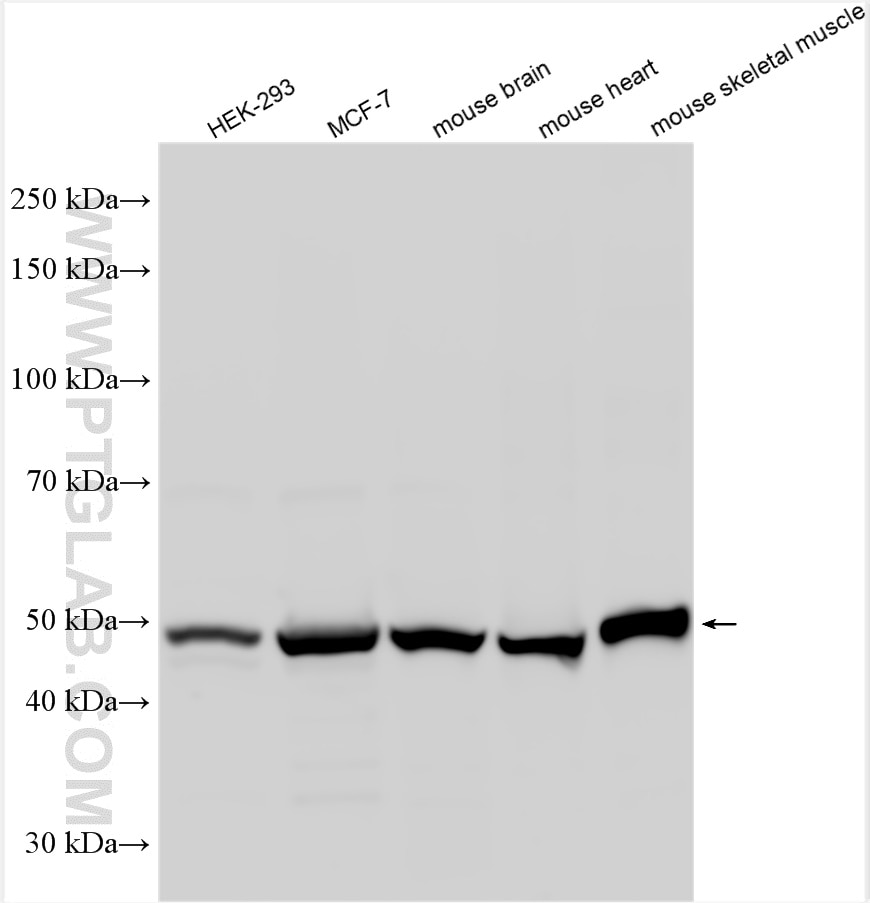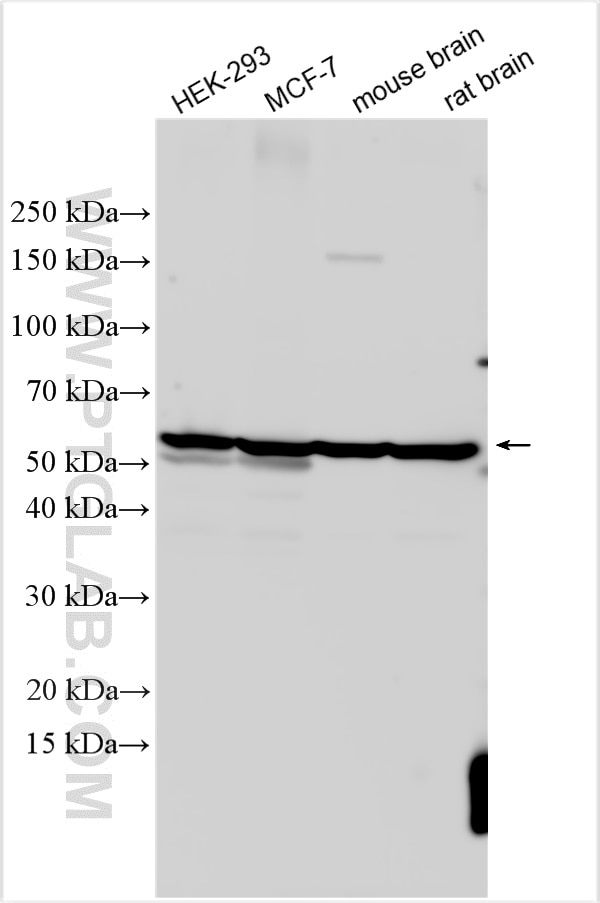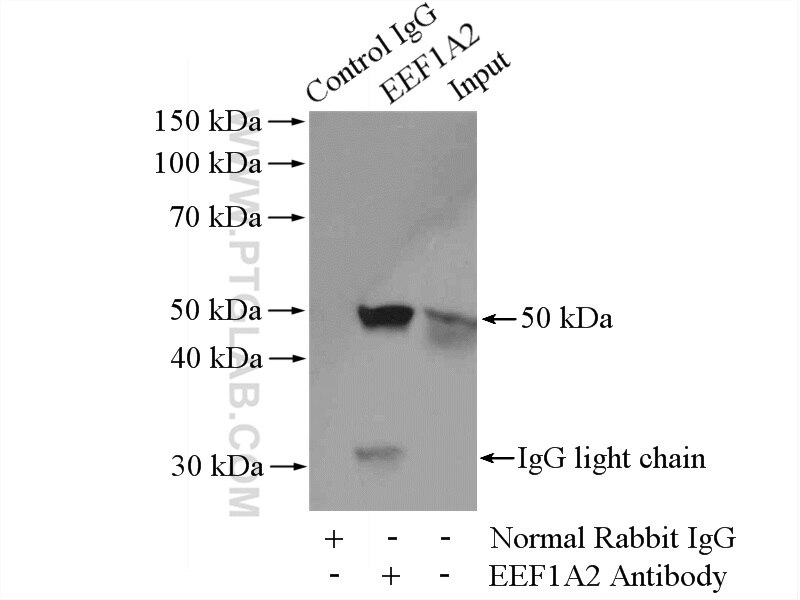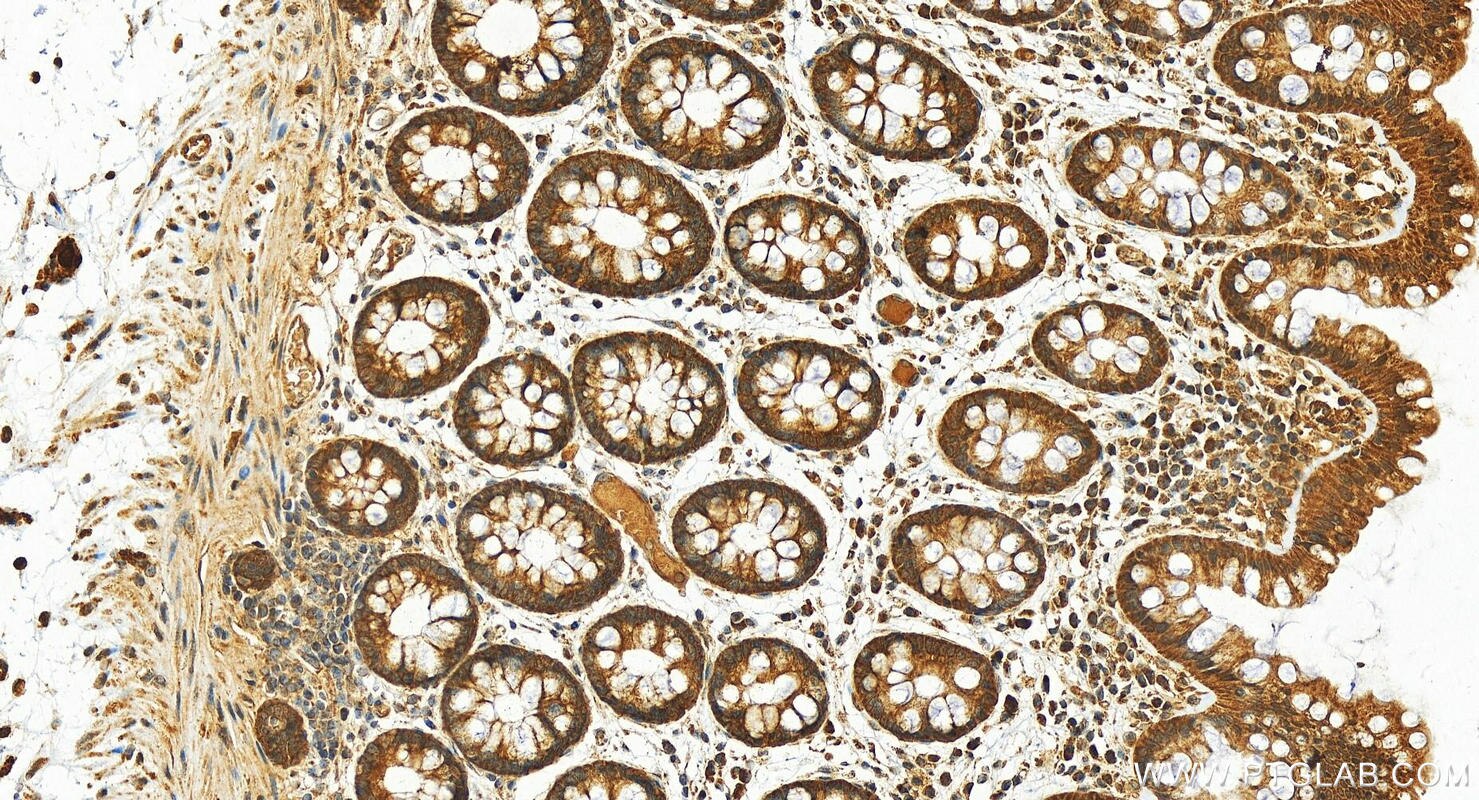Validation Data Gallery
Tested Applications
| Positive WB detected in | HEK-293 cells, MCF-7 cells, mouse brain tissue, mouse heart tissue, mouse skeletal muscle tissue, rat brain tissue |
| Positive IP detected in | mouse brain tissue |
| Positive IHC detected in | human colon Note: suggested antigen retrieval with TE buffer pH 9.0; (*) Alternatively, antigen retrieval may be performed with citrate buffer pH 6.0 |
Recommended dilution
| Application | Dilution |
|---|---|
| Western Blot (WB) | WB : 1:2000-1:10000 |
| Immunoprecipitation (IP) | IP : 0.5-4.0 ug for 1.0-3.0 mg of total protein lysate |
| Immunohistochemistry (IHC) | IHC : 1:500-1:2000 |
| It is recommended that this reagent should be titrated in each testing system to obtain optimal results. | |
| Sample-dependent, Check data in validation data gallery. | |
Published Applications
| KD/KO | See 2 publications below |
| WB | See 17 publications below |
| IHC | See 5 publications below |
| IF | See 7 publications below |
| IP | See 1 publications below |
| RIP | See 1 publications below |
Product Information
16091-1-AP targets EEF1A1/EEF1A2 in WB, IHC, IF, IP, RIP, ELISA applications and shows reactivity with human, mouse, rat samples.
| Tested Reactivity | human, mouse, rat |
| Cited Reactivity | human, mouse, rat, zebrafish, oyster |
| Host / Isotype | Rabbit / IgG |
| Class | Polyclonal |
| Type | Antibody |
| Immunogen |
CatNo: Ag6875 Product name: Recombinant human EEF1A2 protein Source: e coli.-derived, PET28a Tag: 6*His Domain: 109-463 aa of BC000432 Sequence: ADCAVLIVAAGVGEFEAGISKNGQTREHALLAYTLGVKQLIVGVNKMDSTEPAYSEKRYDEIVKEVSAYIKKIGYNPATVPFVPISGWHGDNMLEPSPNMPWFKGWKVERKEGNASGVSLLEALDTILPPTRPTDKPLRLPLQDVYKIGGIGTVPVGRVETGILRPGMVVTFAPVNITTEVKSVEMHHEALSEALPGDNVGFNVKNVSVKDIRRGNVCGDSKSDPPQEAAQFTSQVIILNHPGQISAGYSPVIDCHTAHIACKFAELKEKIDRRSGKKLEDNPKSLKSGDAAIVEMVPGKPMCVESFSQYPPLGRFAVRDMRQTVAVGVIKNVEKKSGGAGKVTKSAQKAQKAGK 相同性解析による交差性が予測される生物種 |
| Full Name | eukaryotic translation elongation factor 1 alpha 2 |
| Calculated molecular weight | 50 kDa |
| Observed molecular weight | 50-53 kDa |
| GenBank accession number | BC000432 |
| Gene Symbol | EEF1A2 |
| Gene ID (NCBI) | 1917 |
| RRID | AB_2096979 |
| Conjugate | Unconjugated |
| Form | |
| Form | Liquid |
| Purification Method | Antigen affinity purification |
| UNIPROT ID | Q05639 |
| Storage Buffer | PBS with 0.02% sodium azide and 50% glycerol{{ptg:BufferTemp}}7.3 |
| Storage Conditions | Store at -20°C. Stable for one year after shipment. Aliquoting is unnecessary for -20oC storage. |
Background Information
EEF1A2, also named as EEF1AL, STN and Statin-S1, belongs to the GTP-binding elongation factor family and EF-Tu/EF-1A subfamily. It promotes the GTP-dependent binding of aminoacyl-tRNA to the A-site of ribosomes during protein biosynthesis. EEF1A2 may be critical in the development of ovarian cancer. The MW of EEF1A2 is 50-53kd. This antibody can recognize both EEF1A1 and EEF1A2.
Protocols
| Product Specific Protocols | |
|---|---|
| IHC protocol for EEF1A1/EEF1A2 antibody 16091-1-AP | Download protocol |
| IP protocol for EEF1A1/EEF1A2 antibody 16091-1-AP | Download protocol |
| WB protocol for EEF1A1/EEF1A2 antibody 16091-1-AP | Download protocol |
| Standard Protocols | |
|---|---|
| Click here to view our Standard Protocols |
Publications
| Species | Application | Title |
|---|---|---|
Mol Oncol SNX16 activates c-Myc signaling by inhibiting ubiquitin-mediated proteasomal degradation of eEF1A2 in colorectal cancer development. | ||
Pharmacol Res Nannocystin ax, an eEF1A inhibitor, induces G1 cell cycle arrest and caspase-independent apoptosis through cyclin D1 downregulation in colon cancer in vivo. | ||
Sci Rep Biallelic mutations in the gene encoding eEF1A2 cause seizures and sudden death in F0 mice.
| ||
Br J Cancer Dissecting the expression of EEF1A1/2 genes in human prostate cancer cells: the potential of EEF1A2 as a hallmark for prostate transformation and progression. | ||
Hum Mol Genet Recapitulation of the EEF1A2 D252H neurodevelopmental disorder-causing missense mutation in mice reveals a toxic gain of function. |




